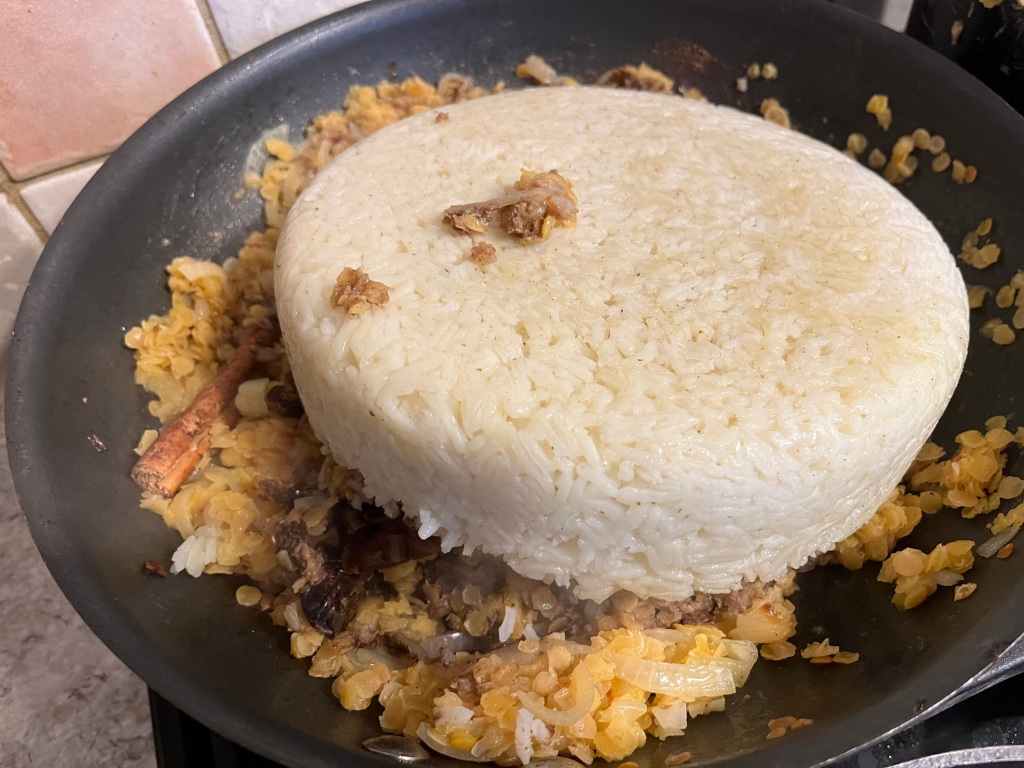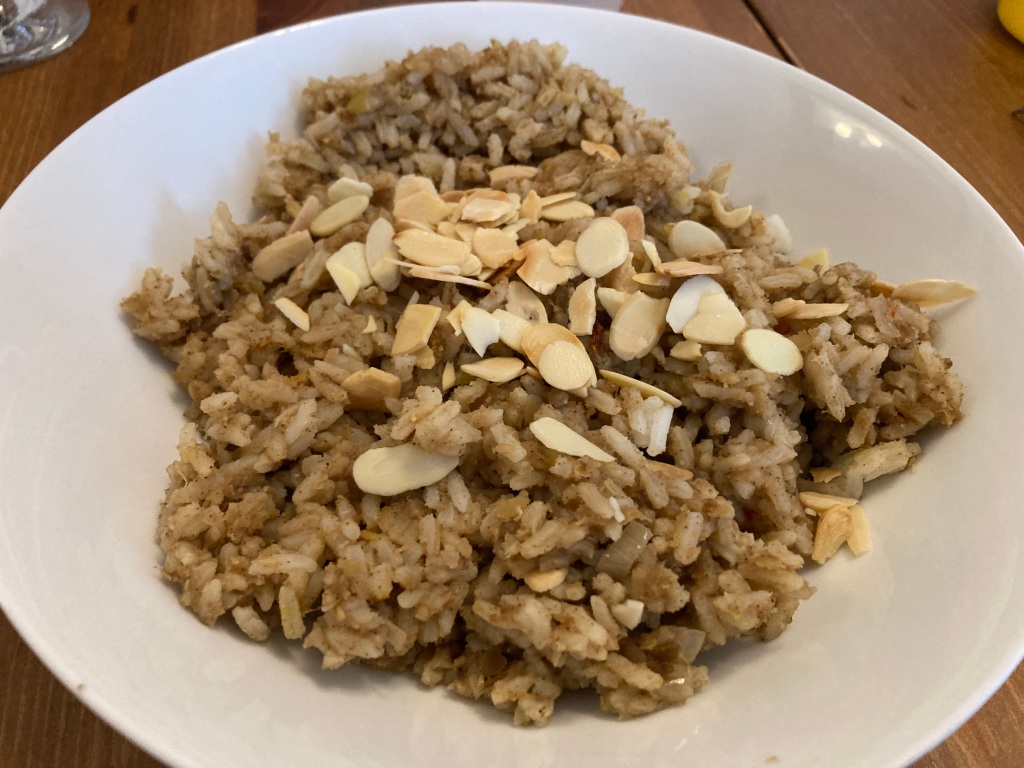Having nearly finished our journey through Africa, we have reached the region where meals are typically served with couscous, rather than the rice we’ve been eating for months. In fact, the national dish of Algeria actually is couscous, but given that couscous on its own isn’t a meal, we went looking for other recipes and doubara biskra (chickpea and broad bean stew) caught our eye. The two sticking points were a) we have run out of ras el hanout and are not buying any new spices until we’ve moved house (this is not easy!) and b) a lot of recipes called for fresh broad beans which are not in season and, frankly, are a bit of a faff.
Finding The Vegan Planet Kitchen was very fortuitous, therefore: their recipe uses frozen broad beans and also had a handy substitute for ras el hanout (1 tsp of ground coriander and cumin and 1/2 tsp of ground cinnamon and ginger). We felt that we had no choice but to use this recipe!
Unfortunately, Tesco struck again and substituted the broad beans on our online order for a broad bean/green bean/pea mix. Oh, and when we went to add the harissa we realised that ours had gone mouldy. So our doubara biskra is not 100% authentic, but we gave it a good go!
Part of giving it a good go was making kesra, a suggested bread accompaniment. Miranda felt that this was something of a brave move on a day when she had both children on her own, but thought that both the stew and the bread looked easy enough to be able to achieve it. Read on to see whether she was right.
Doubara biskra
Ingredients (we doubled this so we would have leftovers)
2 tbsp olive oil
1/2 tsp cumin seeds
4 garlic cloves, minced
1 tbsp tomato puree
1 tbsp harissa
1/2 tbsp ras el hanout
1 large red pepper, chopped into 2cm chunks
1 tin of tomatoes
Salt and pepper, to taste
1 tin of chickpeas, drained and rinsed
300g frozen broad beans
5g fresh parsley, chopped
To serve: sliced tomato, pickled green chillies, thinly sliced spring onion, toasted flaked almonds
Method
1. Heat the oil in a pan over medium heat.
2. Add the cumin seeds and fry for 30 seconds, then add the garlic. Saute until the garlic is lightly golden (around 2 minutes).
3. Add the tomato puree and harissa and continue to saute, stirring continuously, for 1 minute.
4. Add the ras-el-hanout, red pepper and tinned tomatoes, as well as 200ml water, and stir to combine.
5. Bring to the boil, then reduce the heat to a gentle simmer for 8 minutes, stirring frequently.
6. Taste and adjust seasoning.
7. Add the chickpeas and broad beans. Bring back to a simmer and cook for a further 8 minutes, stirring occasionally.
8. Serve with your choice of garnishes.
Serves 2


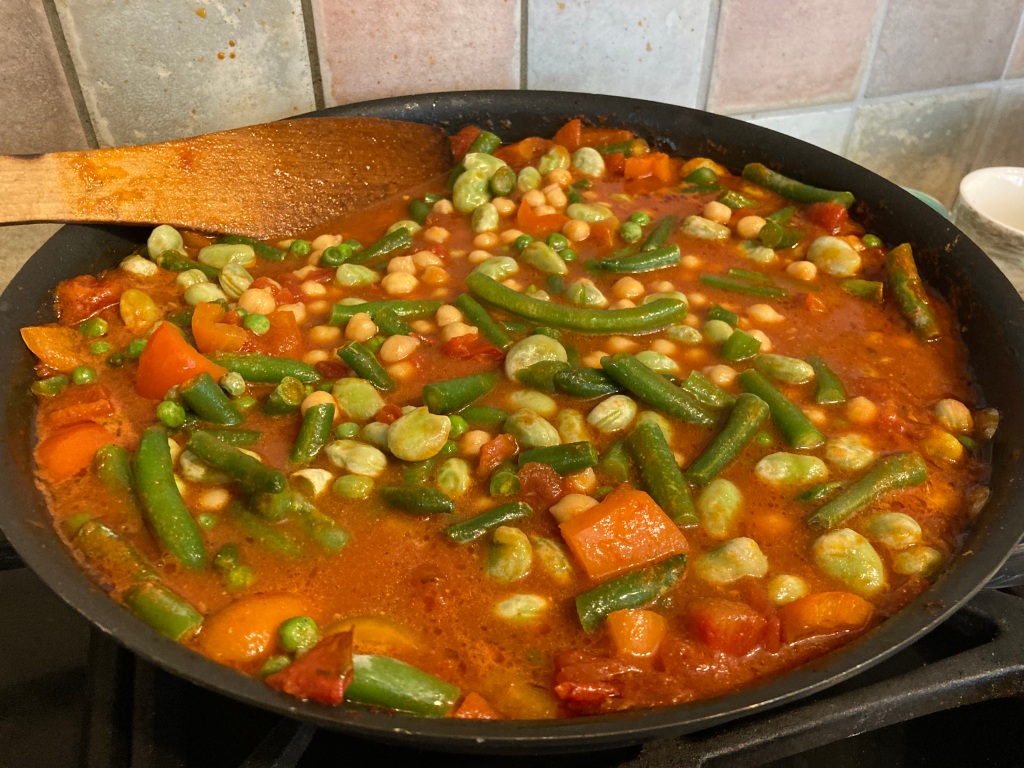
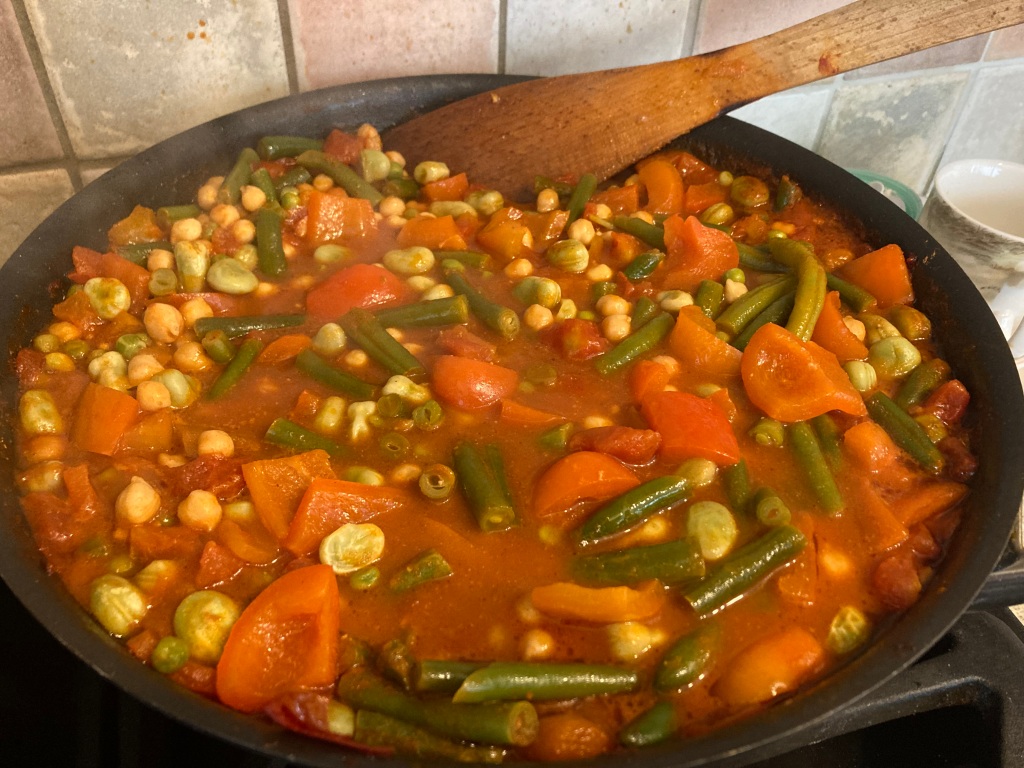
Kesra
Ingredients
300g fine semolina
100g medium semolina
3 tbsp olive oil
1 tsp salt (or to taste)
125ml water (we needed a little more than this)
Method
1. Mix the semolina and salt together and stir in the olive oil until all the grains are coated.
2. Slowly add enough water, whilst mixing, to make a soft dough.
3. Knead the dough until it has a slight spring when pressed and leave covered for 30 minutes.
4. Divide the dough into two and press into a circular disc about 1/4 inch deep.
5. Cook in a pan over low-medium heat for about 20 minutes, turning often. The kesra should have a firm crumbly exterior and be moist inside.
Serves 2-3


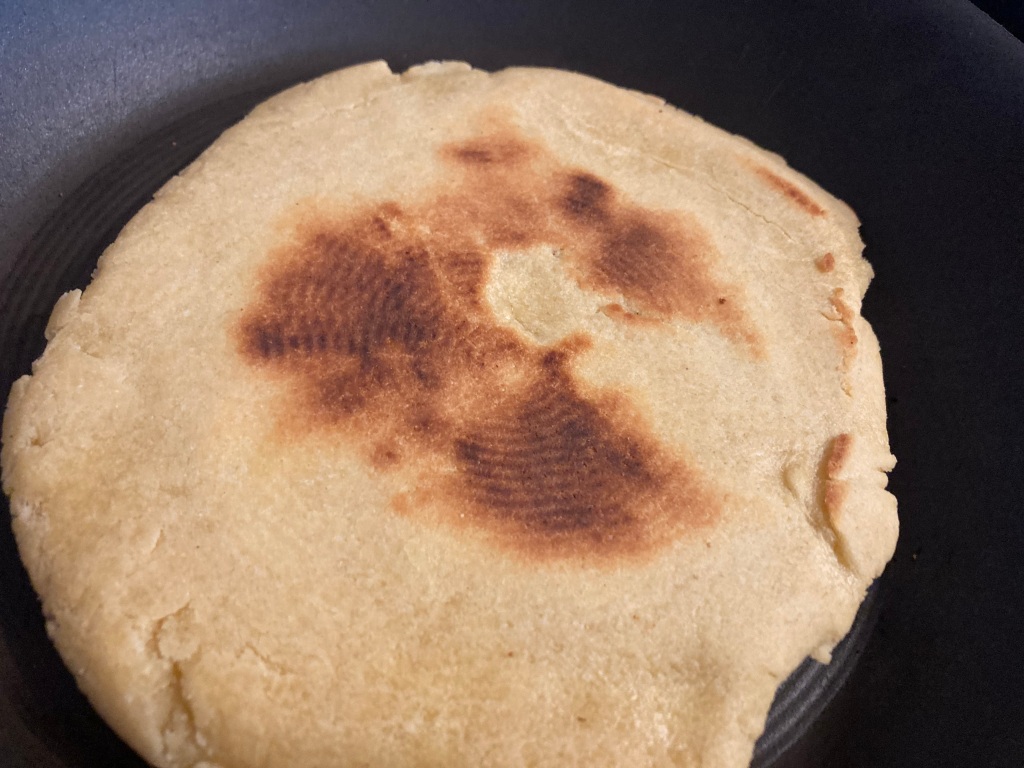


Given how simple this was, we were surprised by how much we enjoyed it. The stew was somehow both hearty and fresh at the same time, and undoubtedly would have been even better with the harissa that was supposed to be in it! We had the leftovers with couscous instead of bread, which was just as enjoyable.
As for the bread, it was different from the sort of bread we’d normally have with a meal and for that reason we thoroughly enjoyed it – well, that and the fact that it tasted nice! The crumbly texture was almost biscuitty yet it was still somehow able to mop up the juices from the stew. We’re glad to have discovered this one as it was very easy to throw together: we can imagine ourselves making it again.
(Kids didn’t think much of the bread and only Baby Mash was interested in the stew. You can’t win them all.)




